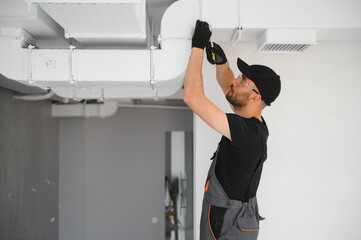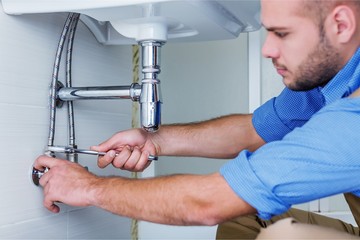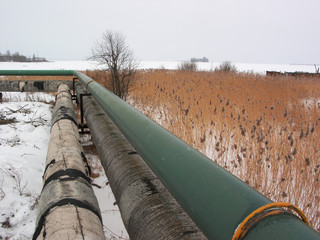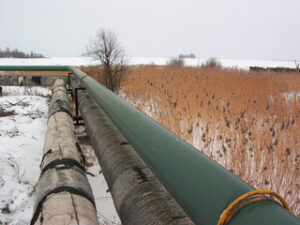HVAC Round Rock stands for heating, ventilation and air conditioning. These systems help keep a building’s occupants warm and comfortable in the winter, cool and fresh in the summer, and improve indoor air quality year-round.
Many types of HVAC systems are available, including ductless mini-splits and zoned systems. These options offer different degrees of flexibility, but they all work on similar principles.
HVAC systems are crucial for regulating the temperature, air quality and other characteristics of enclosed spaces in both residential and commercial buildings. They help improve comfort and health by ensuring occupants are warm in the winter, cool in the summer and have clean, fresh indoor air year-round.
Despite the fact that there are many different types of HVAC units, they all work in similar ways. All HVAC systems move air, either heating it or cooling it and directing it to a space via ductwork. They do this all day, every day to ensure that the temperature and quality of a space’s air is ideal for the people inside it.
For heating, a typical HVAC system consists of a furnace and blower that work in tandem to generate heat. This heat is then transferred to the space by air ducts, where it is distributed evenly. This process is usually accomplished by using a thermostat that determines when heat is needed, as well as a timer to control when it is shut off.
Most central HVAC systems use a furnace as their primary source of heat. However, some also include an evaporator coil to allow for both heating and cooling. These systems are often called hybrid or dual-fuel systems and can be very energy efficient when used properly. Another popular option is the heat pump, which functions by absorbing and releasing thermal energy from both environmental air and the ground. These systems can be more energy efficient than traditional furnaces and are also becoming more widely used because of their low operating costs.
Ventilation is an essential part of any HVAC system, as it keeps a space healthy and comfortable. Ventilation systems typically consist of a filter, blower and ductwork that work together to keep the air in a space fresh and clean. The filtration system removes air particles, contaminants and other harmful materials from the air, while the ventilation system distributes the cleaned air to spaces that require it.
While a basic HVAC system can be sufficient for most homes, many businesses and other organizations choose to invest in more extensive systems that are designed to serve larger spaces. These bigger systems are capable of producing more heat and removing more humidity than smaller ones, and they also tend to have more components that need regular maintenance and replacement.
Cooling
When most people think of HVAC, they automatically picture air conditioning units. That’s because this acronym stands for heating, ventilation and air conditioning — the systems that keep us warm and cozy in winter and cool and comfortable in summer. However, your HVAC system is made up of multiple components both on the inside and outside of your home that work together to meet your temperature, comfort and air quality needs all year round.
Heating is done with equipment such as furnaces, boilers or heat pumps. These devices use electricity, propane, heating oil or natural gas to generate heat for a room or entire building. The heating process works through conduction, radiation or convection.
Ventilation is achieved through ductwork or vents that carry warm and cold air from the HVAC units to different rooms in your home. Ventilation also helps to clean and filter indoor air, which is essential for your health and well-being.
Cooling is accomplished through HVAC cooling towers, which are typically found in large or commercial areas due to their size. These towers are built to be tall to give the water plenty of time to contact the air and dissipate heat by evaporation. Cooling towers are often seen in conjunction with steam power plants, as they are used to cool the hot steam that is generated.
In most cases, the HVAC system will require a cooling tower to work effectively. Most HVAC systems that operate without one are unable to handle large areas efficiently. The cooling tower’s size should be directly proportional to the area it will be cooling. The larger the cooling tower, the more efficient it will be.
Many HVAC systems also use a programmable thermostat to control and regulate temperature. The thermostat will send a signal to the rest of the system when it is needed, based on your desired settings. This is the most familiar component of your HVAC system, and the one you’ll likely interact with most frequently.
Ventilation
Ventilation is the process of changing or replacing air in a space to control temperature, remove moisture, smoke, heat, dust, airborne bacteria and carbon dioxide and to replenish oxygen. It is one of the most important aspects of maintaining acceptable indoor air quality in buildings. Ventilation can be accomplished naturally through windows or mechanically through ventilation systems such as ductwork and fans.
The ventilation system may be designed to be low-pressure or high-pressure. High-pressure systems conduct supply airflow at high velocities and are generally more efficient than low-pressure systems. However, high-pressure systems can cause discomfort to occupants by generating an unpleasant sensation called draught. This can be remedied by properly adjusting the velocity and pressure of the system.
Ideally, the location of an air intake should be away from sources of pollution and odours such as basement garage floors or directly facing garbage collection points. Ventilation system design should also take into account the location of exhaust outlets to avoid recirculating odours and pollution back into the building.
Natural ventilation through windows and doors can also be very effective at removing pollutants and excess moisture from a space. This is especially helpful in urban areas with high pollution levels and humid climates where condensation can be a major problem.
When it comes to HVAC comfort, ventilation is just as important as heating and cooling. It’s essential to keep the indoor air clean and healthy, and it can also help protect your home or business from damage caused by too much moisture.
Mechanical ventilation systems provide many benefits that are not available with natural or passive ventilation. They can eliminate the need for odour filters, reduce energy consumption by shifting peak electrical loads and improve the efficiency of heating/cooling systems by using thermal energy stored in ice or chilled water during off-peak hours.
With mechanical ventilation, the air is drawn into a system through an air inlet unit where it is filtered and brought up to the desired temperature before being directed to different rooms through a network of ducts or registers. The system can be designed to meet the needs of any space, from homes and office buildings to hospitals and other large commercial structures.
Maintenance
A well-maintained HVAC system can lower utility costs, regulate temperatures and air quality, and help homeowners save money on repairs. The key to this is a routine maintenance schedule, which includes inspections, cleaning, and tests. The process also involves replacing worn parts and making repairs, such as replacing air filters and adding refrigerant. The technician may also recommend upgrades to improve energy efficiency and reduce operating expenses.
Without regular maintenance, problems with a home’s heating and cooling systems can become major issues that require costly repair or replacement. This is especially true if a homeowner neglects to keep up with preventive maintenance and inspections.
Most HVAC equipment manufacturers require that the system be maintained regularly, and they often offer warranty coverage on newer units. Failure to follow the recommended maintenance schedule can void the warranty, and it will be up to the property owner to pay for any repairs or replacements that are not covered by the warranty.
During a typical maintenance session, the technician inspects the unit for signs of damage or safety hazards. They will also clean the unit to ensure that dust and debris is not blowing into the home. They may also change the air filter or add refrigerant, and they will test the system to determine its operating efficiency. They will also make any necessary repairs or upgrades and provide a written report to the customer.
A good HVAC maintenance plan will cover the cost of regular service, repairs, and parts, as well as labor. Depending on the plan, it can also include annual tune-ups and an emergency callout service. Some maintenance plans also include a discounted rate on parts and labor, which can significantly cut your overall repair costs.
Leaks and corrosion are common problems that can occur in an HVAC system, and these can lead to expensive replacements or a complete system overhaul. Regular maintenance checks can spot these issues early and address them before they cause serious damage.
Some homeowners can choose to perform routine maintenance themselves, but it’s usually best to leave the job to a professional. It’s a good idea to prepare your home before the technician arrives, as this will make the inspection and maintenance work more efficient. For example, you should trim any bushes or trees that are within a foot or two of your outdoor condenser and pull furniture away from vents. You should also clear a path to the utility room so the technician can easily access the equipment.




